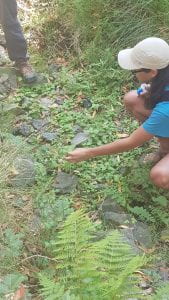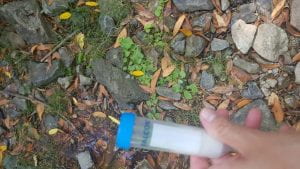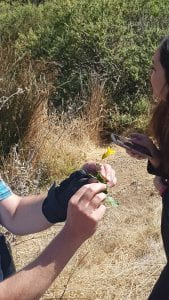On Tuesday 09/10/2019, we took a car ride to Mount Tamalpais Rock Spring (37,9106721, -122,6129603). This public land contains 40 endemic plants and it is administered by different entities. The main goal of this trip was to get the full spectrum of what ecologists does. We walked down through rock spring and followed a creek to find and collect samples of Mimulus guttatus.
On our way, we encountered a poison oak. We had to avoid any contact with this plant because it causes irritation on skin.
We stopped at a shady spot where we saw groups of Mimulus guttatus growing. Alec, a graduate student doing research in this area, gave us a brief background on his research. He told us that he is studying time and variability hypothesis by comparing inland and coastal populations of Mimulus guttatus and that the shady part of the land is a good place to study this topic because there is not much temperature fluctuations. He also added that this species has a lot of morphological diversity which made allowed them to survive in different habitats. Moreover, these properties of Mimulus guttatus allowed it to be the second most studied plant species in ecology.
After the briefing, we collected fresh plant leave samples, placed them in tubes with silica gel and labeled them by date and our initials.
After that, we moved to a drier environment and found a dead population of Mimulus guttatus with a different morphology than the ones inside the creek.
Next, we took short ride to a serpentine habitat which is a harsh place to live for plants due to heavy metals inside the soil. We were able to find another dead population of the species.
Finally, we walked through a hillside where we observed a blossomed Mimulus guttatus. Here, we argued that the habitat influences whether the plant are annual or perennial.










